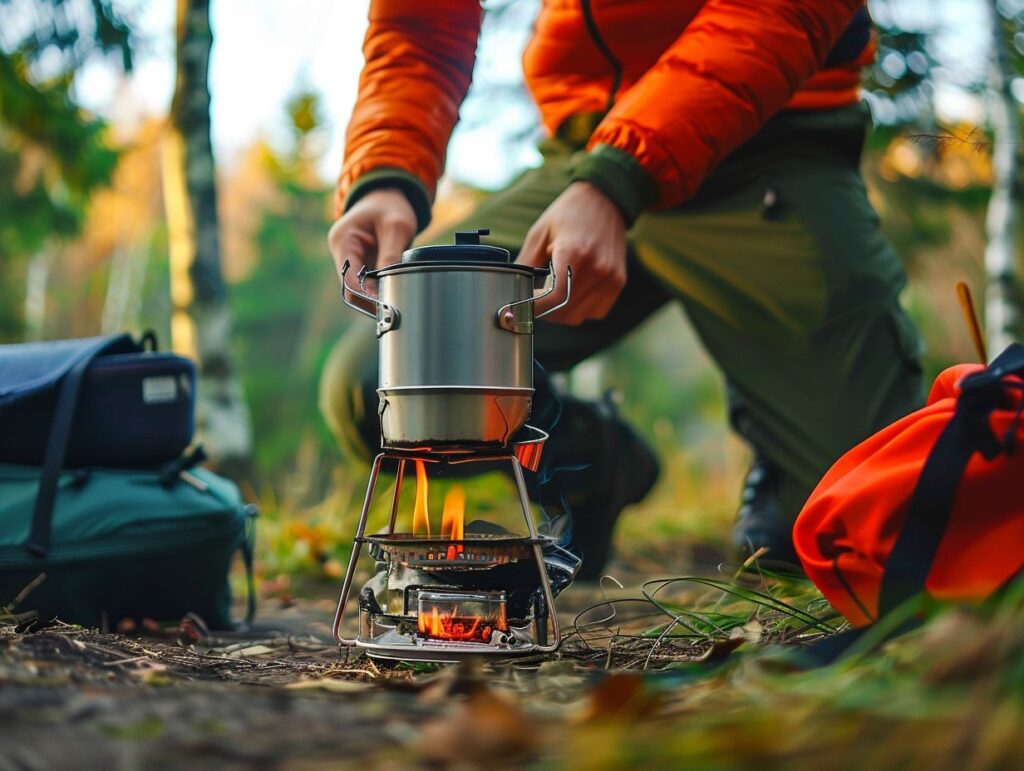Are you planning a camping trip and wondering how to choose the right camping stove? Look no further!
We discuss the different types of camping stoves, how to choose the right one for your needs, and provide step-by-step instructions on how to set up and safely operate a camping stove.
Whether you’re a novice camper or a seasoned outdoor enthusiast, these tips and precautions will help ensure a safe and enjoyable camping experience. Let’s dive in!
Key Takeaways:
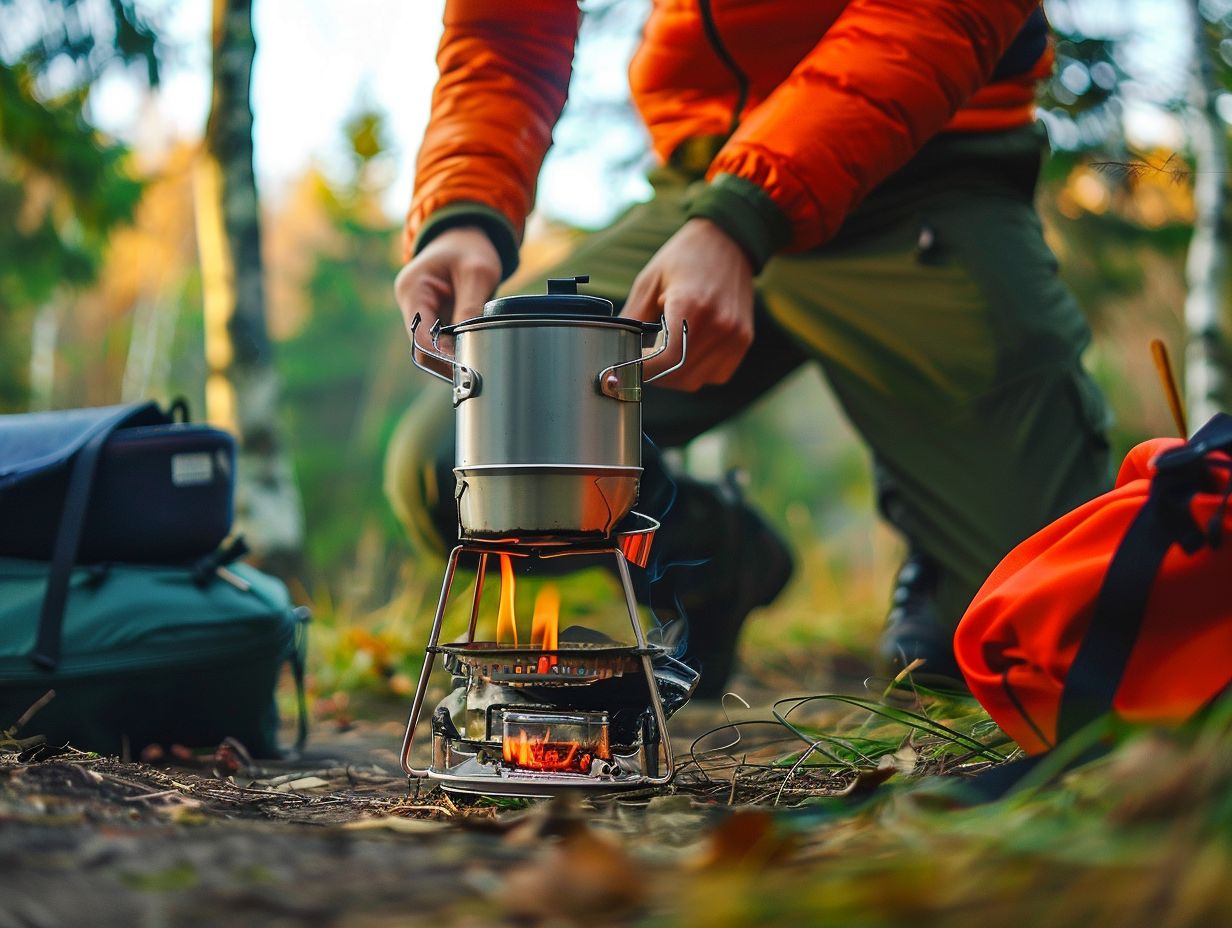
- Choose the right camping stove by considering group size, fuel type, and portability.
- Set up your camping stove on a level and heat-resistant surface, and connect the fuel source carefully.
- Operate your camping stove safely by following instructions, keeping it away from flammable materials, and monitoring the flame.
How to Choose the Right Camping Stove?
Selecting the appropriate camping stove for your outdoor excursion requires a thoughtful evaluation of various factors to ensure a reliable and efficient culinary experience.
1. Consider the Group Size
When selecting a camping stove, it is imperative to take into account the size of the group to ensure adequate cooking capacity for all individuals. For individuals embarking on solo journeys or couples seeking adventure, compact camping stoves with one or two burners may be sufficient, offering a blend of portability and efficiency.
Conversely, for larger families or groups, stoves equipped with multiple burners and higher capacities prove to be more suitable for ensuring efficient meal preparation. The presence of multiple burners facilitates the simultaneous cooking of various dishes, thus saving time and guaranteeing that everyone is adequately catered for.
Moreover, larger stove capacities enable the preparation of substantial portions or the accommodation of a greater number of individuals, thereby enhancing the camping experience and providing convenience for all participants.
2. Determine the Type of Fuel
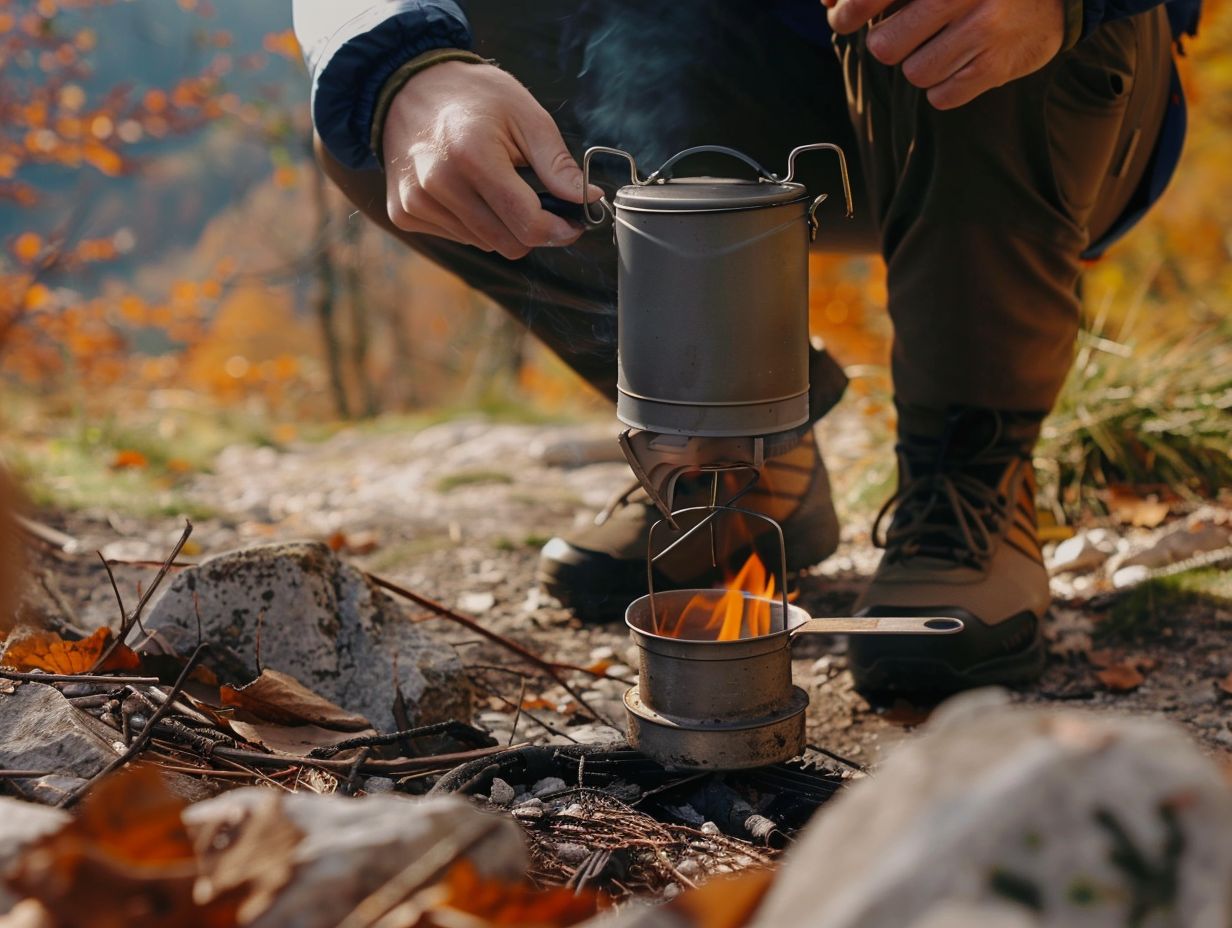
The selection of fuel for a camping stove can have a significant impact on its performance and convenience throughout the duration of the camping trip.
When evaluating fuel options for a camping stove, it is important to note that liquid fuels such as petrol and paraffin possess excellent energy density, making them particularly suitable for cold weather camping. Whilst these fuels are widely available at most petrol stations, the challenge lies in the safe storage of these substances due to their flammability.
Conversely, propane represents a clean-burning and convenient alternative commonly found in portable propane canisters. Whilst these canisters are easily accessible and portable, they can be cumbersome and add weight to one’s camping gear.
It is advisable to consider factors such as cooking requirements, stove compatibility, and the availability of fuel sources before ultimately deciding on the most appropriate fuel type for the camping stove.
3. Consider the Weight and Portability
The considerations of weight and portability hold significant importance, particularly for backpackers who are required to transport their camping equipment across extensive distances. A camping stove that is lightweight and compact can profoundly impact the overall camping experience.
Although the allure of larger stoves equipped with more potent burners may be strong, the drawback lies in the additional weight and bulk they entail. Opting for a stove that achieves a balance between weight and cooking performance permits backpackers to savour a hot meal without compromising the ease of transport.
The contemporary market offers a diverse array of camping stove designs that prioritise efficiency and convenience while retaining functionality. Acquiring a portable stove tailored to your specific requirements can enrich your outdoor experiences while ensuring your backpack remains light and manageable.
How to Set Up a Camping Stove?
Properly setting up a camping stove is essential for safe and efficient cooking, ensuring that one can enjoy camping meals without experiencing any complications.
1. Find a Level Surface
Ensuring the stability of your camping stove is paramount, with finding a level surface in your camping area being of utmost importance. This is particularly crucial for safe stove operation, as an uneven surface can lead to the stove tipping over, resulting in spills, accidents, and potential injuries.
To identify a level spot, one may utilise a small bubble level tool or simply place a pan on the surface to assess any wobbling. In instances where the ground is not level, establishing a stable base using rocks, logs, or adjusting the stove’s legs for balance is recommended.
Additionally, clearing any debris or vegetation from the area is advised to mitigate fire hazards and ensure adequate airflow for the stove.
2. Place the Stove on a Heat-Resistant Surface
It is imperative to ensure that the camping stove is positioned on a surface that is resistant to heat in order to mitigate the risk of accidental fires and to protect the camping environment from damage.
Appropriate surfaces for the placement of a camping stove may include solid rock, gravel, sand, or clear ground. It is crucial to exercise caution when situating the stove on flammable surfaces such as dry grass or in close proximity to bushes. To further enhance safety measures, it is advisable to use a tarp underneath the stove to provide added protection to the ground.
Additionally, the use of wind guards specifically designed for camping stoves can aid in maintaining a consistent flame and prevent abrupt gusts of wind from extinguishing the fire. By adhering to these preventive measures, individuals can partake in their camping endeavors in a secure and responsible manner.
3. Connect the Fuel Source
It is essential to ensure the proper connection of the fuel source to your camping stove to guarantee safe and effective operation.
To securely connect various types of fuel sources, it is important to start by ensuring that both the gas tank or fuel canister and the stove are in the off position. Subsequently, it is advisable to inspect the connection points for any signs of damage or wear.
When dealing with propane tanks, use a spanner to securely fasten the regulator onto the tank valve. In the case of using a fuel canister, carefully screw it onto the stove’s designated attachment point.
Following the establishment of secure connections, proceed to turn on the fuel source and carry out a leak check by applying a soapy water solution to the fittings. If the formation of bubbles occurs, indicating a leak, it is imperative to promptly turn off the fuel source and address the issue before using the stove.
How to Safely Operate a Camping Stove?
Operating a camping stove safely requires adherence to crucial safety guidelines to mitigate accidents and ensure a seamless cooking experience.
1. Read the Instructions
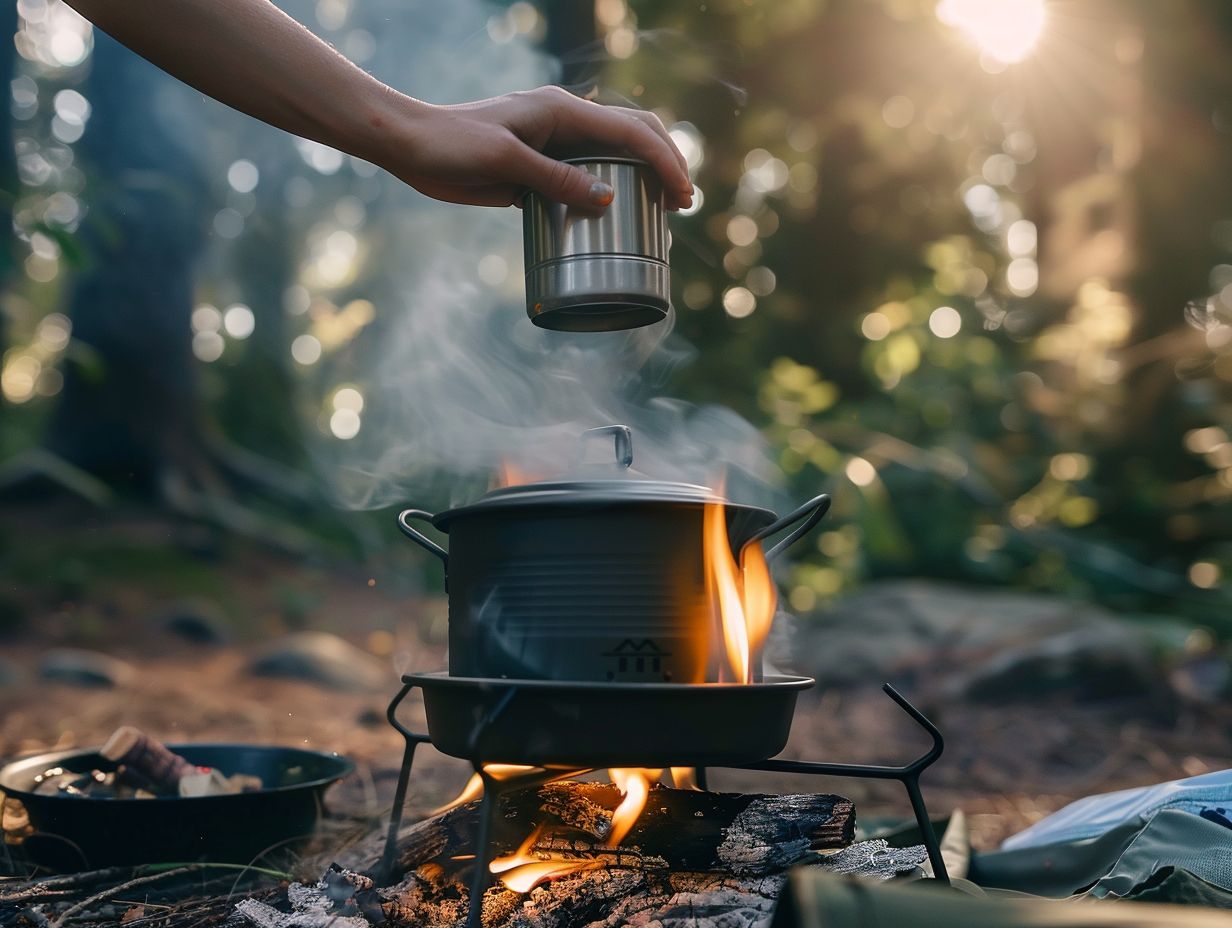
Before utilising your camping stove, it is imperative to thoroughly review the manufacturer’s instructions in order to comprehend its specific operational procedures and safety recommendations.
This understanding plays a critical role in preventing misuse and ensuring the secure operation of your stove. The instructions manual will furnish valuable insight into the correct setup and ignition of the stove, as well as offer guidance on flame adjustment and equipment maintenance.
Acquainting oneself with the manual also allows for gaining knowledge about essential safety features, such as proper fuel handling, management of potential leaks, and safe stove shutdown procedures. Adherence to these instructions with meticulous care can facilitate the enjoyment of outdoor cooking activities without encountering any avoidable accidents.
2. Light the Stove Away from Flammable Materials
It is crucial to always ensure that your camping stove is ignited in a location that is distant from tents, dry leaves, and any other flammable materials in order to minimise the potential risk of accidental fires.
When determining a suitable area for the operation of the stove, emphasis should be placed on selecting open spaces with adequate ventilation to decrease the accumulation of gas fumes.
Additionally, it is recommended to clear the immediate vicinity of any debris or clutter that could readily ignite. Placing the stove on a steady, level surface will aid in preventing accidents and spills. It is essential to never leave the stove unattended while it is in use and to maintain a fire extinguisher or water source nearby as a precautionary measure.
3. Monitor the Flame
It is imperative to monitor the flame during cooking to verify the proper functioning of the cooker and mitigate potential hazards.
Regularly inspecting the flame is crucial as it serves as an indicator of the fuel’s efficient combustion. A consistent, blue flame denotes proper combustion, facilitating uniform cooking and energy conservation. External elements such as wind can impact the flame, leading to flickering or a yellow hue, which signifies incomplete combustion.
To address this concern, the installation of a wind guard around the cooker can assist in maintaining a stable flame. By promptly resolving these issues, not only does one improve cooking efficiency but also places a priority on safety within the kitchen.
4. Never Leave the Stove Unattended
It is imperative to never leave your camping stove unattended during operation to prevent accidents and facilitate rapid response in the event of an emergency.
Remaining in close proximity and maintaining visual supervision of the stove, particularly when utilising an open flame for cooking, is essential. The act of abandoning a stove whilst in use presents significant hazards, including the risk of fire outbreaks or burns.
By staying in the immediate vicinity of the stove, you can promptly address any emerging issues, thereby averting potential escalation into perilous circumstances. Emphasising safety and exercising vigilance are paramount when utilising any cooking apparatus, especially in outdoor environments where conditions may be characterised by greater unpredictability.
What Are the Safety Precautions for Using a Camping Stove?
It is imperative to enact safety measures when using a camping stove to reduce the risk of accidents and ensure a safe camping trip.
1. Have a Fire Extinguisher or Water Source Nearby
It is important always to have a fire extinguisher or water source readily available when using a camping stove to promptly manage any unintended fires.
Along with ensuring the presence of essential firefighting tools, it is critical to store them in easily accessible locations. Ideally, position the fire extinguisher near the camping area exit or in a central location that is both visible and reachable by all individuals in the event of an emergency.
Properly educate yourself and all members of your group on the correct operation of the fire extinguisher. Safety should always be the top priority, therefore conducting regular maintenance and inspections of firefighting equipment is crucial to guarantee their functionality in times of need.
2. Keep the Stove Away from Tents and Other Flammable Objects
It is important to maintain a safe distance between your camping stove and tents or other flammable objects in order to reduce the likelihood of accidental fires. Common camping items such as propane cylinders, fuel canisters, dry leaves, and flammable liquids should also be stored away from the stove to mitigate potential hazards.
It is recommended to keep a minimum distance of three feet between the stove and any combustible materials to establish a secure cooking environment. Embers or sparks emanating from the stove have the capacity to ignite nearby flammable items, thus necessitating caution when arranging your camp kitchen setup.
3. Be Mindful of Wind and Weather Conditions
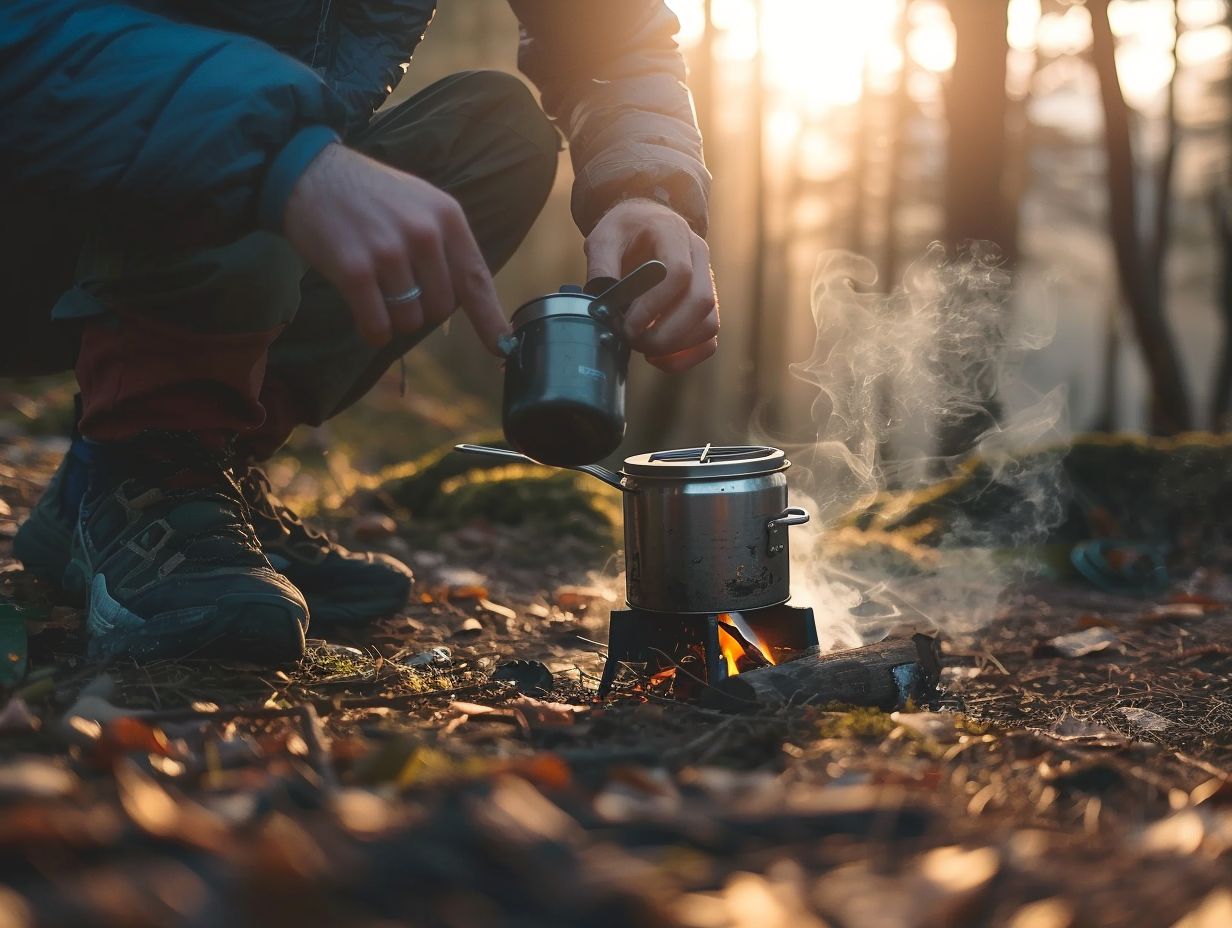
It is important to consider wind and weather conditions when operating a camping stove, as these factors can have a significant impact on the flame and overall performance of the stove. Wind has the potential to disrupt the flame on a camping stove, leading to uneven cooking or extinguishing the flame entirely.
To address this issue, the utilisation of a wind guard or screen is recommended to shield the flame from gusts of air. These protective barriers serve as a defence mechanism, allowing the flame to burn consistently and facilitating efficient heat transfer to the cookware.
Implementing a wind guard around the stove enables users to cook with enhanced control and precision, even in challenging outdoor environments characterised by strong winds.
Frequently Asked Questions
What are the essential safety measures to follow when using a camping stove?
Always read the manufacturer’s instructions and follow them carefully. Make sure to keep the stove on a flat and stable surface, away from any flammable materials. Use only the recommended fuel and never leave the stove unattended while it’s in use.
How do I properly light a camping stove?
Before lighting the stove, make sure all the fuel and gas connections are secure. Then, open the valve gradually and light the stove with a lighter or matches. Keep your face and body away from the flame and adjust the flame to the desired level.
Can I use a camping stove inside a tent or a camper?
No, it’s not safe to use a camping stove inside a tent or a camper. It can cause carbon monoxide buildup, which is highly dangerous. Always use the stove in a well-ventilated area and keep it at a safe distance from your sleeping area.
How do I ensure the stove is completely turned off?
After using the stove, turn off the valve and let it cool down before handling it. Make sure all the fuel sources are disconnected and remove any residual fuel from the stove. Store the stove in a safe and dry place.
Can I cook with a camping stove during windy conditions?
It’s not recommended to use a camping stove in windy conditions as it can cause the flame to flicker and be unpredictable. If you must use it, make sure to set it up in an area that is sheltered from the wind.
What do I do in case of a fire or gas leak while using a camping stove?
If there is a fire, turn off the valve and try to smother the flames with a blanket or sand. If there is a gas leak, immediately turn off the valve and remove the stove from the area. Seek professional help if necessary.

